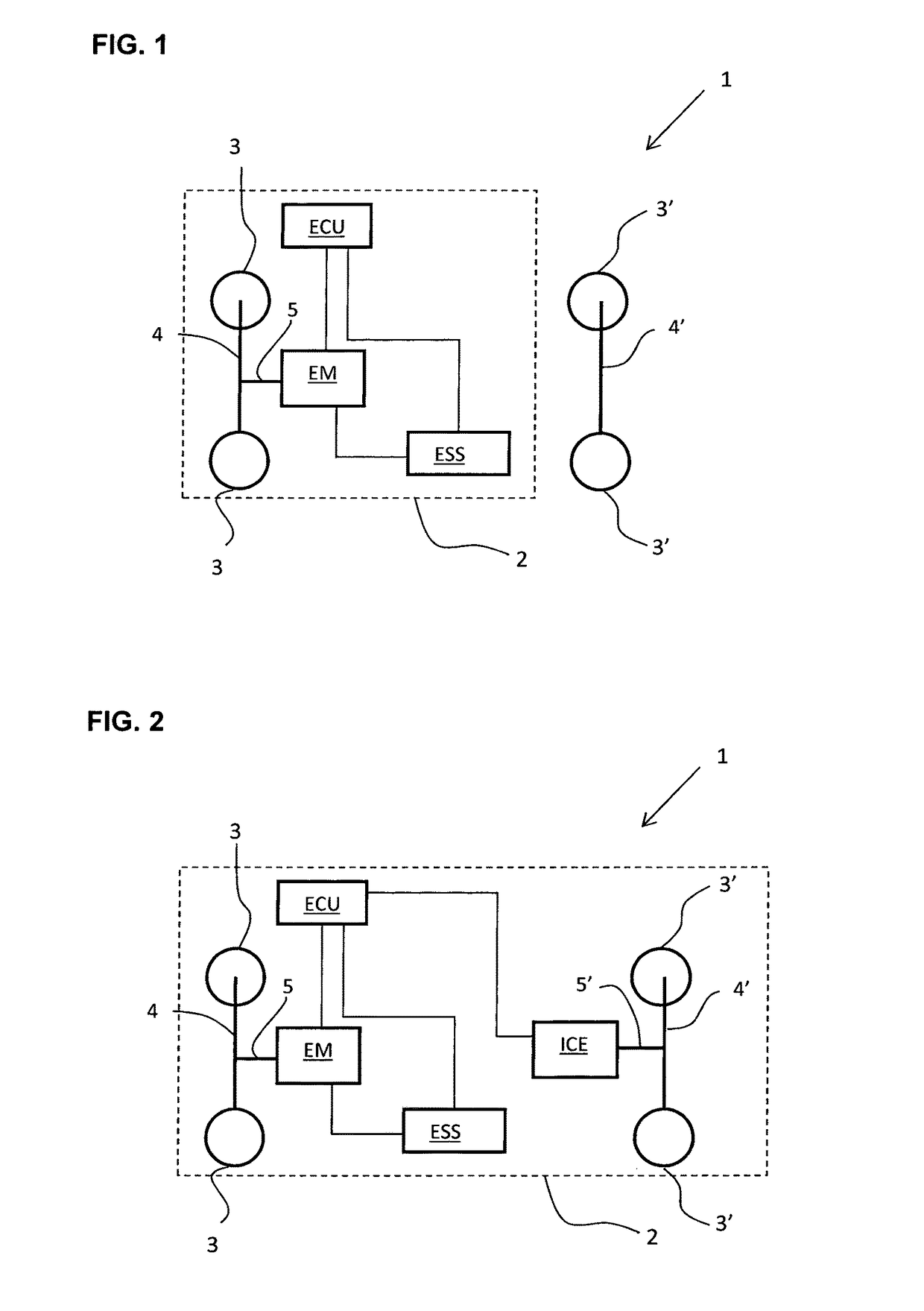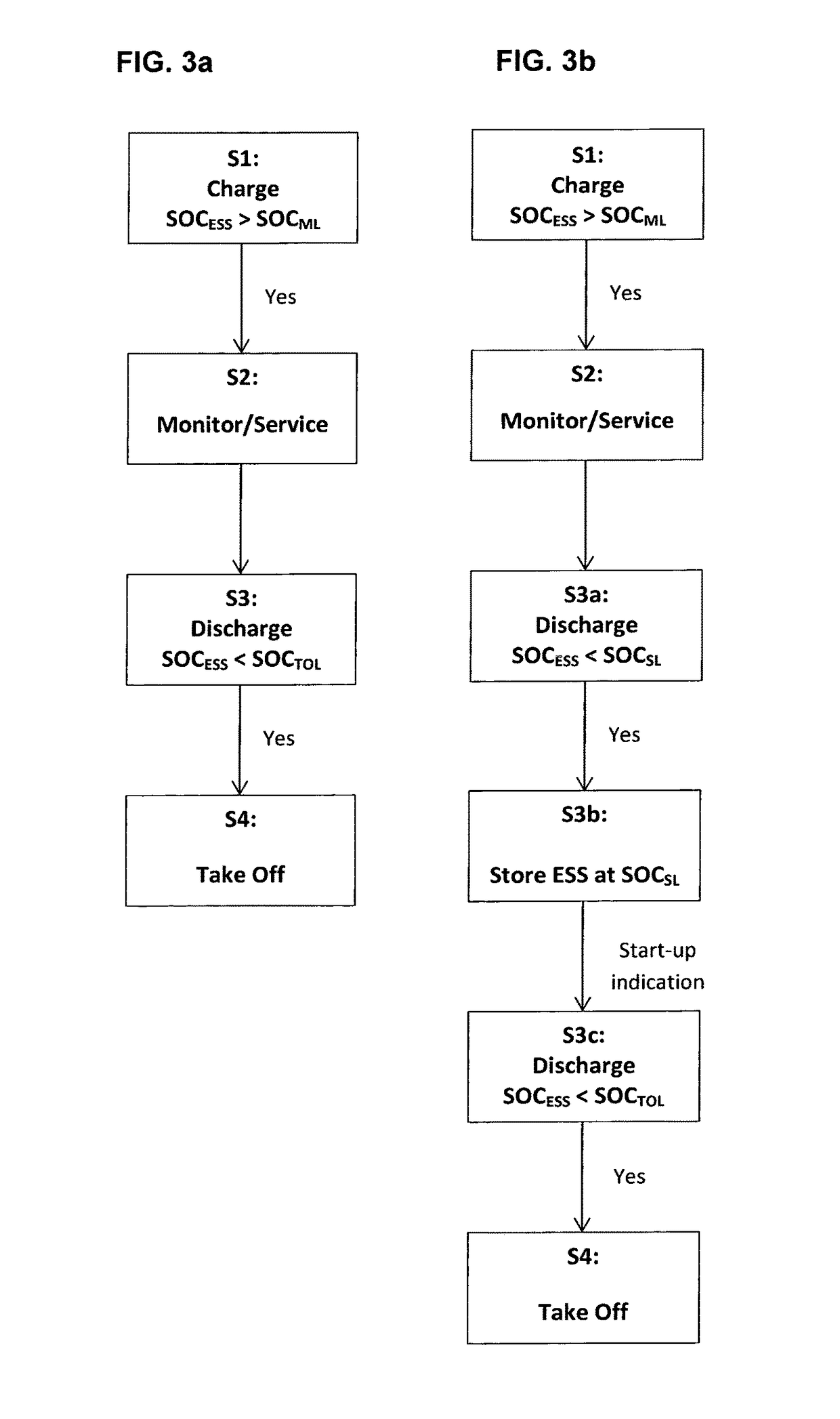A method and device for charging an electric energy storage system in a vehicle
a technology of electric energy storage and which is applied in the direction of electric devices, battery/fuel cell control arrangements, electric devices, etc., can solve the problems of reducing the capacity reducing the usability of the electric energy storage system, and affecting the operation of the vehicle, so as to improve the usability of the electric propulsion system and improve the usability of the vehicl
- Summary
- Abstract
- Description
- Claims
- Application Information
AI Technical Summary
Benefits of technology
Problems solved by technology
Method used
Image
Examples
Embodiment Construction
[0031]In FIG. 1 is shown a vehicle I comprising an electric propulsion system 2. The electric propulsion system 2 comprises a pair of driven wheels 3 attached to a driven axle 4 which is drivingly connected to an output shaft 5 of an Electric Motor (EM). The Electric Motor (EM) is electrically connected to an electric Energy Storage System (ESS) for powering the electric motor (EM). The electric propulsion system 2 further comprises an Electronic Control Unit (ECU) connected to the electric Energy Storage System (ESS) and the Electric Motor (EM) in order to monitor and / or control the ESS and EM. The vehicle I further comprises a second pair of wheels 3′ connected to a second axle 4′ which wheels 3′ not are driven.
[0032]The above described vehicle is only intended to serve as an example of an Electric Vehicle (EV) suitable for the control system according to the invention. The system may be modified, e.g. may the Electric Motor (EM) also be drivingly connected to the second axle 4′ s...
PUM
 Login to View More
Login to View More Abstract
Description
Claims
Application Information
 Login to View More
Login to View More - R&D
- Intellectual Property
- Life Sciences
- Materials
- Tech Scout
- Unparalleled Data Quality
- Higher Quality Content
- 60% Fewer Hallucinations
Browse by: Latest US Patents, China's latest patents, Technical Efficacy Thesaurus, Application Domain, Technology Topic, Popular Technical Reports.
© 2025 PatSnap. All rights reserved.Legal|Privacy policy|Modern Slavery Act Transparency Statement|Sitemap|About US| Contact US: help@patsnap.com



